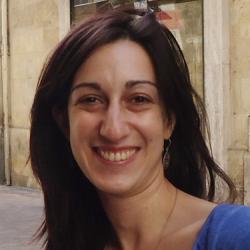Biography
Adriana Laura Massidda submitted her PhD thesis at the University of Cambridge (King’s College/Department of Architecture) in July 2016. Her thesis, entitled ‘Shantytowns and the Modern City: Examining Urban Poverty in South-Western Buenos Aires (1958-1967)’ is focused on the history of urban informality in Buenos Aires and the interaction between the shantytowns and the State. Adriana is currently a Teaching Fellow at the Bartlett School of Architecture, University College London. She obtained her architectural training from the University of Buenos Aires (2006) and has worked in practice in Argentina and in the United Kingdom.
Research
PhD Thesis
Shantytowns and the Modern City: Examining Urban Poverty in South-Western Buenos Aires (1958-1967)
Supervisor
Felipe Hernández
Advisor
Nick Bullock
My thesis explores the intertwining of the activities of shantytown residents and government organizations as they affect the continuous (re)configuration of the urban territory. More specifically, it examines a series of case studies from South-Western Buenos Aires during the period 1958-1967, when shantytown expansion and state intervention were particularly intense. It is argued that shantytown residents’ agency, understood as the ability of a collective or an individual to act independently from a social structure that nevertheless constrains them, was a key engine of urban transformation throughout this time. Such transformation was carried out through a twofold set of dynamics. On the one hand, space was remodelled, altered, and upgraded on an everyday basis through the non-collective, albeit aggregated, actions of thousands of individuals and families. At the same time, in order to defend and expand their achievements, shantytown residents elected representatives, organised local committees and mobilised collectively. The intertwining of both types of action defined the degree of spatial and social consolidation of different shantytowns, and their ability to resist state eviction initiatives in the longer run.
At the same time, my thesis contends that urban planning, as the tool par excellence used by political power to intervene in the urban territory, not only promoted in this context the reconfiguration of undeveloped areas of the city, but also served as a mechanism through which populations which were seen as non-compliant could be controlled. During the period studied, Buenos Aires urban planning was deeply embedded in the international circulation of ideas and funding that stemmed from the context of the Cold War, and also influenced by previous ideals connected to modern architecture. Despite an international context in which debates about housing increasingly valued self-built and bottom-up solutions, Argentine planning continued to sustain an ideal of the modern city in which shantytowns would be evicted and their residents displaced to the urban margins. This thesis will argue that such selective adoption of ideas followed a national and international government agenda. Due to the very precariousness of land tenancy in shantytowns, the tensions implied in urban planning emerged in them with particular strength.
My thesis situates this analysis within the context of recent debates about urban informality in the Global South, and an increasing interest in the unexplored field of shantytown history. Beginning from the premise that urban transformations can be read as political acts per se, as they involve the deployment of some specific type of power onto the territory, this thesis demonstrates that the intertwining of shantytowns residents’ and state actions in 1958-1967 Buenos Aires embodied a particularly complex but nevertheless perceptible instance of spatial politicisation.
Publications
‘Negociaciones, permanencia y construcción cotidiana en villas (Villas La Lonja, Cildáñez y Castañares, Buenos Aires, 1958-1967)’. Revista urbana. Special issue Villas miseria, favelas y asentamientos: nuevas rutas en historia urbana, by guest editor Rosa Aboy, 9/1 (2017). https://periodicos.sbu.unicamp.br/ojs/index.php/urbana/article/view/8646368
'”Sí, señor, yo vivo aquí”' and 'Pick-up football in the canchita de San Blas'. In World Film Locations series: Buenos Aires, ed. by Santiago Oyarzábal and Michel Pigott (Bristol: Intellect Books, 2014).
'Mapping the Suburbs: Cartographic Representations of Villa Celina, Buenos Aires, 1955-2011'. New Suburban Stories, ed. by Martin Dines and Timotheus Vermeulen (London: Bloomsbury-Continuum, 2013).
'The Plan de Emergencia (1956): Housing Shortage in Buenos Aires Then and Now'. Scroope Journal Nr.21 (2012). University of Cambridge – Department of Architecture.
'Feria La Salada: una centralidad periférica intermitente en el Gran Buenos Aires'. In Centralidades Urbanas e Históricas en la Argentina, ed. by Margarita Gutman (Quito: Olacchi-Flacso Ecuador, 2010). Co-authored with Di Peco and others.


